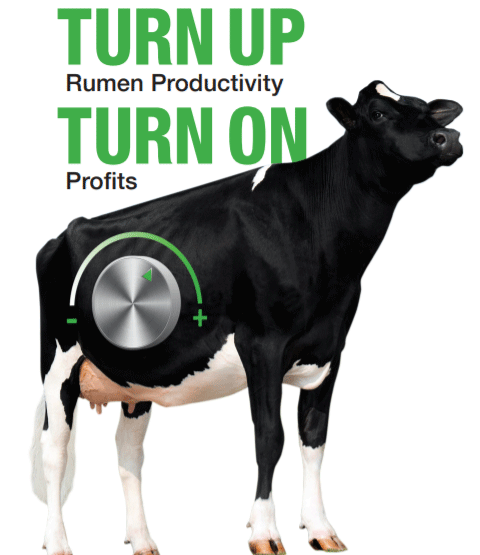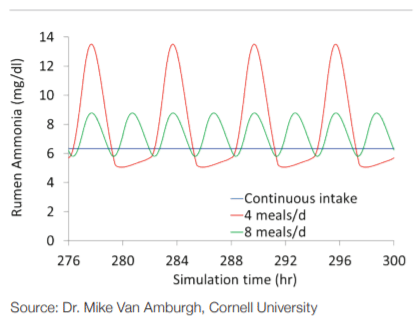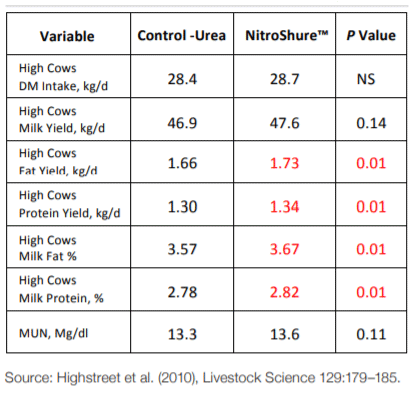
Content sponsored by:
Balchem Animal Nutrition
NitroShure: An Important Tool for Optimizing Rumen Productivity in Challenging Economic Times
Published: September 30, 2021
By: Charlie Sniffen, Ph.D. and Clay Zimmerman, Ph.D.
Summary
When milk prices and dairy profit margins are good, many of us become lax in fine-tuning rations and paying attention to optimizing rumen microbial yield. With low milk prices and rising feed protein prices, we need to fine-tune our rations to enhance microbial growth in the rumen.
Why should we do this?
With a good controlled fermentation (con-trolling pH or acidity) in the rumen, we will do two things: first, we will maximize the energy derived from the fiber, starch and other carbohydrates fed and secondly we will optimize microbial protein flow from the rumen. This results in high quality protein production in the rumen and can reduce the need to feed more expensive ingredients to meet the energy and amino acid requirements of the cow.

Meeting the needs of the rumen microbiome is in many ways more complicated than meeting the needs of the cow. When the needs are not met correctly, individual microbes in the rumen reduce their growth and change their fermentation behavior, resulting in the production of unwanted fermentation acids, like lactic acid, which reduce rumen pH.
One of the biggest requirements is for rumen degradable protein (RDP): ammonia (NH3) and amino acids from protein degraded in the rumen. With the right blend of nitrogen sources, fiber digestibility is enhanced; resulting in a more controlled acidity in the rumen. Additionally, the fermentation results in a higher production of acetate and butyrate, enhancing milk fat production by the cow. The goal should be to maintain a level of ruminal NH3 that optimizes microbial activity and to avoid situations where NH3 is wasted (too high) or is insufficient (too low) to support optimal microbial activity.
The challenge we have is that microbial digestion of fiber is slower than digestion of starch and other carbohydrates. This discrepancy in the rate of digestion of various carbohydrates has become more of a challenge recently, because there has been a push to reduce the amount of protein we feed to cows.
This change results in a bigger challenge in providing the NH3 and amino acids needed by the fiber-digesting bacteria for fiber digestion. We have oversimplified ration formulation by adding raw urea and relying on the NH3 coming from the rapid break-down of the forage protein sources. We need to control the release of NH3 in the rumen to balance the needs of the slower growing fiber-digesting bacteria. This balance can be achieved by providing a steadier ruminal supply of NH3 throughout the day to avoid the peaks and valleys in ruminal NH3 that can occur with inconsistent meal patterns (Figure 1). This is where the relatively new technology of a controlled release NPN source can better meet the needs of the fiber-digesting bacteria. Research has shown that with this technology, fiber digestibility is enhanced, rumen pH is better controlled and microbial yield is increased, increasing metabolizable amino acid supply to the cow.
NitroShure™ is a controlled release NPN source for dairy diets. When properly formulated into diets at rates up to 180 gr/cow/day, NitroShure can result in the following benefits:
- Increased microbial protein yield
- Increased fiber digestibility
- Increased yield of milk, milk fat and/or milk protein (Table 1).
- Create space in the diet (100 gr of NitroShure can replace approximately 600 gr of soybean meal 44% or 700 gr of rapeseed meal), providing formulation flexibility.
- May result in moderate diet cost savings, depending on the price of feed proteins and formulation strategies.
- Can reduce out-of-pocket feed costs and increase the use of homemade raw materials.
Contact your Balchem representative for more information about NitroShure™ and how Nitro-Shure™ can be successfully incorporated into your diets to improve microbial protein yield, increase fiber digestibility and improve dairy profitability.
Figure 1. Theoretical rumen ammonia levels with varying meal patterns simulated in CNCPS v7

Table 1. Effect of Feeding NitroShure Versus Urea on Lactation Performance of Dairy Cows

Related topics:
Authors:
Recommend
Comment
Share

Would you like to discuss another topic? Create a new post to engage with experts in the community.

.jpg&w=3840&q=75)